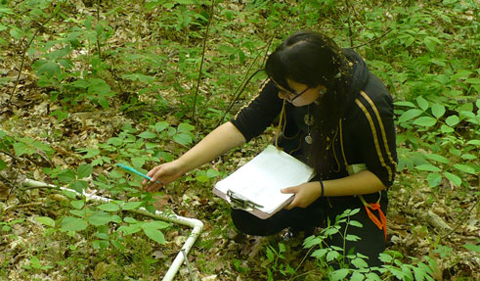
Marion Holmes
The Environmental & Plant Biology Colloquium Series presents Marion Holmes on “Effects of Agricultural Land Use on Forest Development, Herb Community Composition, and Spatial Dynamics” on Friday, Oct. 13, at 11:50 a.m. in Porter 104.
Holmes is a Ph.D. Candidate in Environmental & Plant Biology at Ohio University.
Abstract: Most modern forest in Eastern North America and Northern Europe has regrown after abandonment from agriculture or logging. Although land-use history is known to influence modern forest composition and structure, the specific influences of different agricultural practices are less understood. The goal of this study was to describe the long-term legacies of two contrasting agricultural uses, cultivation of row crops and pasturing, on stand development, site heterogeneity, herb community composition, and distributions of forest herb populations in successional forests. We used land-use history as a laboratory to test hypotheses about the mechanisms of community assembly and contribute to understanding of forest dynamics. The study was designed as a replicated chronosequence consisting of formerly cultivated and pastured sites spanning 0-80 years past canopy closure, as well as a control group of long-established stands with no apparent agricultural history. A chronosequence approach allowed for analysis of incremental change during succession.
Formerly cultivated fields had reduced microtopography, higher soil bulk density, and homogenized spatial distributions of environmental variables compared to pastured sites; however, physical site character converged between land-use histories and was equivalent to that of long-established forest after 41-60 years of succession. In contrast, herb community composition was still distinctly between post-agricultural and long-established stands after 80 years. Both richness and composition differed significantly between formerly cultivated and pastured sites. Species accumulation emerged as a key process in herb community assembly, and the lag time between convergence of the physical environment and the herb community indicates that species arrival, likely influenced by dispersal limitation, is a stronger influence on post-agricultural herb communities than environmental homogenization. Species distributions within sites showed multiple trajectories of pattern formation, and were most strongly influenced by plant life history traits such as seed dispersal and vegetative propagation rather than environmental limitation.



















Comments